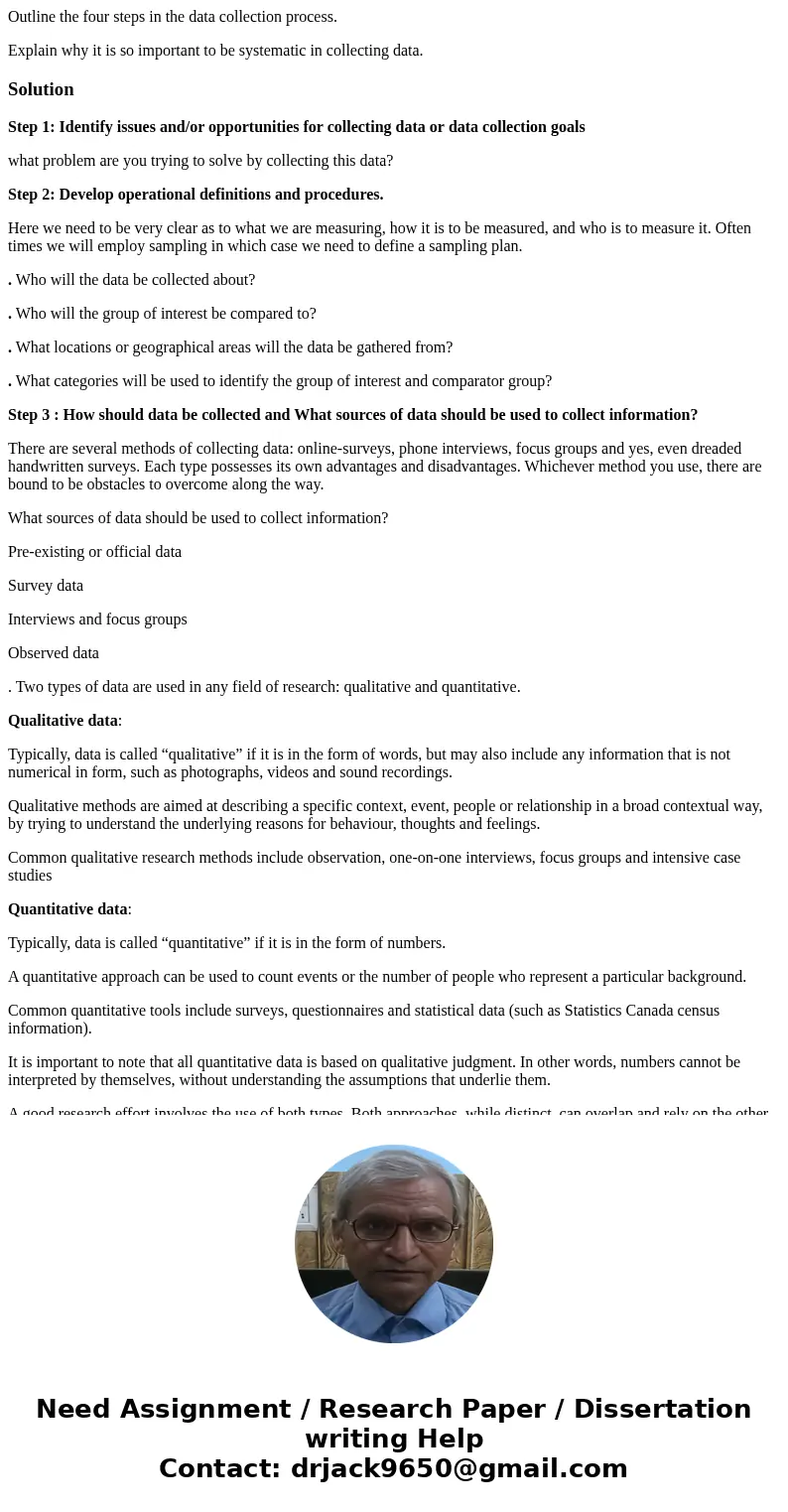Outline the four steps in the data collection process Explai
Outline the four steps in the data collection process.
Explain why it is so important to be systematic in collecting data.
Solution
Step 1: Identify issues and/or opportunities for collecting data or data collection goals
what problem are you trying to solve by collecting this data?
Step 2: Develop operational definitions and procedures.
Here we need to be very clear as to what we are measuring, how it is to be measured, and who is to measure it. Often times we will employ sampling in which case we need to define a sampling plan.
. Who will the data be collected about?
. Who will the group of interest be compared to?
. What locations or geographical areas will the data be gathered from?
. What categories will be used to identify the group of interest and comparator group?
Step 3 : How should data be collected and What sources of data should be used to collect information?
There are several methods of collecting data: online-surveys, phone interviews, focus groups and yes, even dreaded handwritten surveys. Each type possesses its own advantages and disadvantages. Whichever method you use, there are bound to be obstacles to overcome along the way.
What sources of data should be used to collect information?
Pre-existing or official data
Survey data
Interviews and focus groups
Observed data
. Two types of data are used in any field of research: qualitative and quantitative.
Qualitative data:
Typically, data is called “qualitative” if it is in the form of words, but may also include any information that is not numerical in form, such as photographs, videos and sound recordings.
Qualitative methods are aimed at describing a specific context, event, people or relationship in a broad contextual way, by trying to understand the underlying reasons for behaviour, thoughts and feelings.
Common qualitative research methods include observation, one-on-one interviews, focus groups and intensive case studies
Quantitative data:
Typically, data is called “quantitative” if it is in the form of numbers.
A quantitative approach can be used to count events or the number of people who represent a particular background.
Common quantitative tools include surveys, questionnaires and statistical data (such as Statistics Canada census information).
It is important to note that all quantitative data is based on qualitative judgment. In other words, numbers cannot be interpreted by themselves, without understanding the assumptions that underlie them.
A good research effort involves the use of both types. Both approaches, while distinct, can overlap and rely on the other to produce meaningful data, analysis and results.
Step 4 : Analyze and interpret data and Act on results
Explaining the technical steps involved in analyzing and interpreting data is beyond the scope of this guide. An organization will have to determine whether it has the internal capacity and expertise to analyze and interpret data itself, or whether it will need the help of an external consultant.
. A summary of the results of the analysis and interpretation of the data
. Identification of the barriers, gaps and opportunities that exist steps that will be taken to address these barriers, gaps or opportunities now and in the future
. Realistic, attainable goals with short-term and longer-term timelines
. Input sought from stakeholders and affected communities
. How progress in meeting these goals will be monitored, evaluated and reported
why it is so important to be systematic in collecting data:
Surveys are a huge undertaking that involve countless components. From managing the minutest tasks such as setting up conference calls/meetings, to the more complex tasks such as analyzing and compiling the data itself; each step needs to be properly explained and documented in order to clearly identify responsibilities and resources. So it is so important to be systematic in collecting data


 Homework Sourse
Homework Sourse